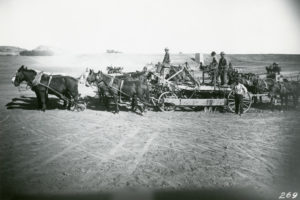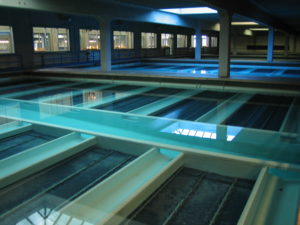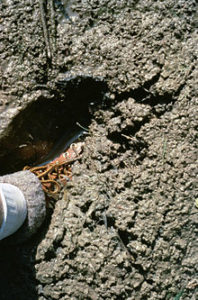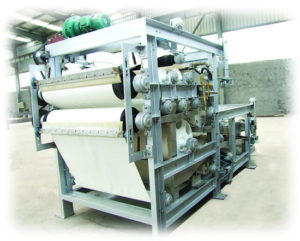Cleaning the Water
I spent 30 years in the water treatment industry. Most of it was water treatment, but I put in three years in as a wastewater treatment operator. The goal of both jobs is to make dirty water clean. The processes are different, and the standards for the product differ, but the idea is to make the water safe for humans. I wouldn’t recommend drinking wastewater plant effluent, but you can swim in it. Water, you can drink, except in Flint.
What about the stuff taken out of the water in order to make it safe? In both instances the stuff is called sludge. Sludge is nasty. There are several kinds of wastewater sludge, some nastier than others. The first step takes out the stuff that sinks. In a wastewater plant, that stuff is the nastiest. I once fell in a pit of primary sludge, injured a finger, and lost it to infection. In Spanish, my nickname is Nueve.
There are several techniques to deal with wastewater sludge to render it more benign, but it still tends to stink. (By any other name, it’s still shit.). That sludge ends up on farmland or as compost. Water plant sludge is treated differently, but gets used the same way.
I spent sixteen years with Denver Water in the Marston treatment plant. It is fed by Marston Lake with water from the South Platte River. Most of the time South Platte water is high quality Rocky Mountain water. At other times, the Rockies get unruly and send some dirty stuff down. The treatment plants have to handle it all. Water treatment is known as a physical-chemical process. A chemical, usually aluminum sulfate is added to the water to make bigger pieces out of the sometimes microscopic pieces that must be removed (bacteria, viruses, cysts, silt, etc.).
Then, the water goes into a big tank where those bigger pieces tend to sink to the bottom. Machinery of some sort scrapes the settled sludge out and sends it to be treated further.
The settled water then goes to the filters where almost everything is removed. Next step, chlorine to kill all the little nasties that make people sick. Then it goes down the pipe to town.
What about all the sludge? Lots of things are in the lake water. Birds, fish, even small organisms create waste products that can be dangerous as well as unpleasant (shit). It is mostly water, but the solids have to be dealt with. At Marston, it goes into a big underground tank and accumulates until it gets removed, dewatered, and hauled away for compost making.
The tank is 20 feet deep, 50 feet wide, and about 150 feet long. After accumulating for a year, the tank is about six feet deep with sludge. Now, water plant sludge is not as nasty as wastewater sludge. Some of it is chemical, clay minerals as the end product of all that aluminum sulfate. But, there are lots of organics as well. When they sit for much of a year in an airless environment, they decompose into stinky stuff. That stinky stuff also gives off hydrogen sulfide gas (the rotten egg smell). H2S and water make sulfuric acid, not good for lungs.
To get rid of that huge gob of stuff, we had to get down there with fire hoses, air monitors, and gas masks. Nasty work and a contrast with our normal routine of lab work, monitoring the computerized systems, and doing routine maintenance. Dirty work with those hoses, but kind of fun as well.
We used those hoses to carve sludge. We would make channels, wash down walls of goo, bore holes, make it spatter our coworkers, and other exciting activities. The whole process took a couple of days. The sludge then went to a thickener eh are much of the water drained off the surface and the sludge drained out the bottom. Then, on to the belt filter press. That thing looks like a big printing press. The sludge goes between two five foot wide belts that go over and under a succession of rollers that squeeze much of the water out. The resulting cake goes up into big hoppers and then into trucks, and hauled to the compost making facility. In the old days all that stuff went into the river. Now, it is a useful product. Pretty cool, eh?



